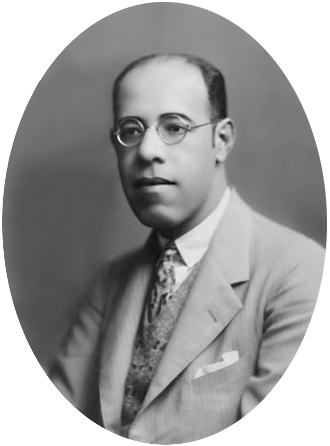

Queer Places:
Casa Mário de Andrade, R. Lopes Chaves, 546 - Barra Funda, São Paulo - SP, 01154-010
Biblioteca Mário de Andrade; BMA, R. da Consolação, 94 - República, São Paulo - SP, 01302-000
Cemitério da Consolação, R. da Consolação, 1660 - Consolação, São Paulo - SP, 01302-001, Brazil
 Mário
Raul de Morais Andrade (October 9, 1893 – February 25, 1945) was a
Brazilian poet, novelist, musicologist, art historian and critic, and
photographer. One of the founders of Brazilian modernism, he virtually
created modern Brazilian poetry with the publication of his Paulicéia
Desvairada (Hallucinated City) in 1922. He has
had an enormous influence on modern Brazilian literature, and as a scholar
and essayist—he was a pioneer of the field of ethnomusicology—his
influence has reached far beyond Brazil.[1]
Mário
Raul de Morais Andrade (October 9, 1893 – February 25, 1945) was a
Brazilian poet, novelist, musicologist, art historian and critic, and
photographer. One of the founders of Brazilian modernism, he virtually
created modern Brazilian poetry with the publication of his Paulicéia
Desvairada (Hallucinated City) in 1922. He has
had an enormous influence on modern Brazilian literature, and as a scholar
and essayist—he was a pioneer of the field of ethnomusicology—his
influence has reached far beyond Brazil.[1]
Andrade was the central figure in the avant-garde movement of São Paulo for twenty years.[2] Trained as a musician and best known as a poet and novelist, Andrade was personally involved in virtually every discipline that was connected with São Paulo modernism, and became Brazil's national polymath. His photography and essays on a wide variety of subjects, from history to literature and music, were widely published. He was the driving force behind the Week of Modern Art, the 1922 event that reshaped both literature and the visual arts in Brazil, and a member of the avant-garde "Group of Five." The ideas behind the Week were further explored in the preface to his poetry collection Pauliceia Desvairada, and in the poems themselves.
After working as a music professor and newspaper columnist he published his great novel, Macunaíma, in 1928. Work on Brazilian folk music, poetry, and other concerns followed unevenly, often interrupted by Andrade's shifting relationship with the Brazilian government. At the end of his life, he became the founding director of São Paulo's Department of Culture, formalizing a role he had long held as the catalyst of the city's—and the nation's—entry into artistic modernity.
Andrade remained very protective of his private life. In 1929 he severed contacts with Oswald de Andrade, another titan of the modernist movement (and no relation to the author), after Oswald publicly imputed Mário's effeminacy in the Revista de Antropofagia (‘ Cannibalist Review’), a literary supplement of the Diário de São Paulo. Referring to Mário de Andrade as ‘our Miss São Paulo, translated into the masculine’, Oswald de Andrade signed the article with the pseudonym Cabo Mach-ado in an allusion to a sensuous and nationalistic poem, ‘Cabo Machado’ (Corporal Machado), that Mário de Andrade had written in 1926 about a soldier by that name.
Moacir Werneck de Castro, a member of a group of young Bohemians who socialised with Mário de Andrade when he lived in Rio de Janeiro from 1938 to 1941, later recalled that he and his cohorts had no idea that Andrade had led a double life or was a homosexual. The famous author would spend endless hours with this new generation of aspiring writers and intellectuals, savouring their company while apparently never initiating any sexual contacts with his youthful colleagues. Yet in retrospect, when learning about Andrade's homoerotic desires, Castro recognised the profoundly homosexual content of some of his writing.
Indeed, Andrade led a discreet private life. Although it is currently widely acknowledged that he experienced strong sexual attractions towards other men, few details have been published about this aspect of his life. One of his short stories, ‘Frederico Paciência’, however, deals rather directly with his own homosexuality. Written and revised many times between 1924 and 1942, it was published posthumously in 1947. The story describes the romantic friendship of two students (one presumably being the author) who drift apart without consummating their desires other than through furtive kisses and affectionate embraces. The narrator expresses relief that the friendship has dissolved and the two are separated by distance, as if to imply that he, therefore, does not have to face his own homosexual feelings for Frederico Paciência. Although Andrade did not create a sick and pathetic protagonist, he nevertheless left the reader with the impression that it was far better to repress homoerotic feelings than to express them openly. In many ways, this short story paralleled the real life of the modernist writer who also attempted to contain his sexual desires for other men and shrouded his personal life in a veil of secrecy.
My published books: